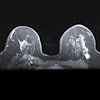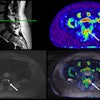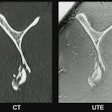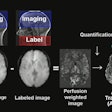AuntMinnie.com: What’s the next step in the evolution of the PACS market?
Tucker, Agfa: We see a change in the clinical applications of PACS due to the driving forces of the Web, allowing radiology departments to gain real competitive advantages. When you can get the images and information more quickly, it allows radiologists to do a more timely job and get that information out through the healthcare facility or enterprise quicker and easier. This will be a market disadvantage for radiology practices that don’t have PACS. In addition, there’s a huge groundswell building for allowing patients access to their images. Clinicians will appreciate radiology practices that have PACS and Web-based distribution of images and reports.
Mason, eMed: We see tight integration of workflow between referring physicians and radiologists, leading to improved service by radiology departments. There will be an acceptance of a more standardized PACS solution as the most cost-effective, easy-to-implement choice. Customers will become more flexible as they define their technology needs. They will realize that they may need to change their process and workflow to fit the solution rather than the "fit the solution around me" approach we see today.
Hullihen, Marconi: We see the technology moving in the direction of doing more with less. If you draw the block diagram of a currently-deployed PACS network, you see a tremendous number of boxes required to make that system go. We see adoption of ways to simplify the technology topology of PACS. These advances will all be supported and enabled by dramatic improvements in cost-effective access to faster network bandwidth, both inside institutions and at large.
diPierro, Philips: The next step will most likely be driven by the need to consolidate applications on the doctor’s desktop. There is less and less tolerance for having a different PC or workstation for each different task, application, and information system. This will drive vendors to develop software applications that adhere to interoperability standards and are hardware independent.
This consolidation does not necessarily require that all information systems (i.e. PACS, RIS, CIS, HIS, etc.) be provided by the same vendor, but that companies adhere to standards (e.g. CORBA, DICOM, HL-7, etc.) so that applications can securely communicate contextual information within the same hardware platform.
Primo, Siemens: PACS will continue to become the imaging layer of the EPR, with users in the enterprise having ubiquitous access to images and reports through the EPR. In the imaging department we will see "Radiology Command Centers" which behave as truly integrated workstations, driving PACS, RIS, and speech recognition as well as providing access to HIS, EPR and the Web. Radiologists will be able to perform diagnostic reading for all imaging departments in the enterprise, without having to be there. We will see the imaging department without walls, with virtual presence of the radiologist, whenever and wherever required.
Users will live in an electronic, geographically distributed imaging enterprise in an atmosphere of clinical excellence, research and education. They could order, schedule, perform, read, access, distribute studies from anywhere, and access results from anywhere.
PACS will proliferate in the community hospitals and imaging centers. Classic teleradiology will become just another function of the on-campus PACS. PACS will also provide an important role in disease management and outcome analysis, thus acting as a planning/controlling tool for the radiology and hospital administration (like similar modules in MIS). Now data can be available for benchmarking activities to match best-in-class performance of radiology services.
AuntMinnie.com: What key technology developments can PACS purchasers expect in the next one to two years?
Mason, eMed: SAN/NAS technology will reduce the need for on-site "deep" archiving and allow users to outsource this function to dedicated data centers. In doing so, performance will increase and the system administration burden will decrease.
Wireless LANs will simplify LAN deployment because they do not require extensive cabling. This is good news for smaller facilities that do not have IT personnel. In other new technologies, messaging engines, such as Exchange Server, will open up a whole new level of communication, and thereby service between radiology and referring physicians.
Wanchoo, GE: There’ll be lots of emphasis on ASP, and making sure that we can, where appropriate, deploy large-scale systems on ASP technology. There’ll also be continued emphasis on integrating PACS with every information system that’s out there.
And also, a lot more activity on image processing and advanced analysis, making these features standard as part of a PACS. We also see implementations of dedicated specialty workstations, offering one seamless interface and voice recognition all in one system. And that’s within radiology, using Web technologies.
Larson, Kodak: E-commerce technologies have a lot to offer PACS. They will allow for more cost effective and highly functional solutions. Today, for example, online brokerages provide minute-by-minute updates on market conditions to thousands of users in a customized format and on a real-time basis. These same technologies and approaches can provide similar services to thousands of healthcare providers by assuring access to all the latest image and information services on a real-time basis.
Obviously the cost as well as the pace of adoption of broadband Internet infrastructure will impact the speed at which Web-based, ASP solutions for both small and large healthcare enterprises are accepted. This is perhaps the most important determinant of broader acceptance of Web-based ASP solutions.
Storage costs continue to decline, and in particular the lower costs of disk–based RAID solutions will improve the cost/performance factor of storage solutions, as well as reduce the risk of technology obsolescence. In addition, the ability to share storage devices throughout the enterprise will allow PACS to be more cost efficient. Finally, remote service and centralized support capabilities will continue to reduce the total cost of deployment of digital image and information systems.
diPierro, Philips: Computer technology will continue to get smaller and faster. Gigabit Ethernet will become more prevalent not only for network backbones but also to the desktop. Flat-panel display technology will become more cost-effective for diagnostic displays, providing not only a better diagnostic workstation but also PACS life cycle cost reductions.
As network bandwidth to the home becomes faster and cheaper through the proliferation of DSL and cable modems, radiologists will not only be able to telecommute, but also provide expert overread services to rural areas of the country and the world.
Primo, Siemens: Faster and affordable broadband telecommunications will provide healthcare workers with a persistent connection to IT applications such as EPR and GroupWare over LAN, wireless, etc., and change again the way healthcare is delivered.
Internet/Web based technologies will make further inroads, when reliability and redundancy issues will be successfully addressed. Storage capacity and computing speed will become abundant.
Affordable ASPs and peer-to-peer computing models (enabled by high bandwidth connections) will become an attractive alternative to today's technologies for implementing PACS and other IT applications for small and large hospitals and enterprises.
Click here to post your comments about this story in our PACS Digital Community. Please include the headline of the article in your message.
Copyright © 2001 AuntMinnie.com


















